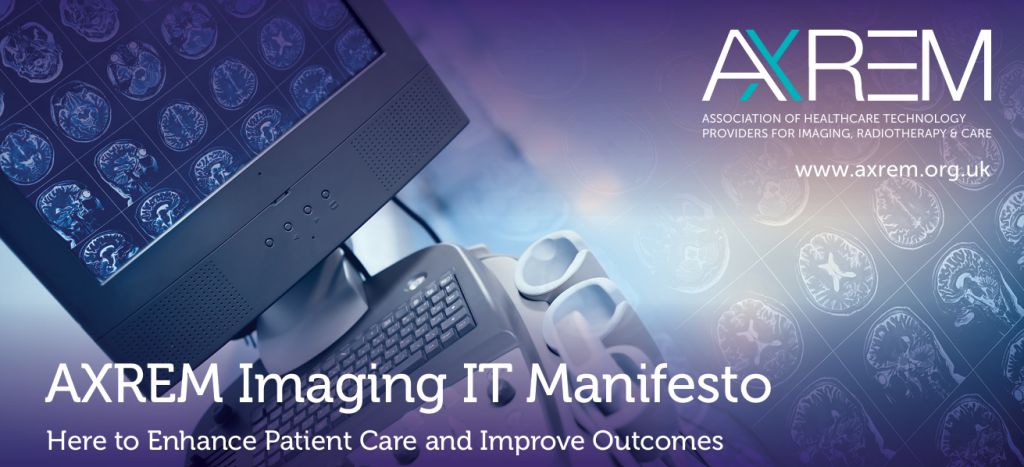The theme of the upcoming AXREM Imaging IT Manifesto Launch, set to take place on Wednesday, April 2nd at Bletchley Park, is: “Here to enhance patient care and improve outcomes.” With healthcare systems facing mounting pressures, what role can technology play in addressing workforce shortages and care fragmentation?
The Growing Burden on Healthcare Systems
Healthcare systems worldwide are struggling to keep pace with rising demand. Health at a Glance: Europe 20241 highlights that twenty EU countries reported a shortage of doctors in 2022 and 2023, while 15 countries reported a shortage of nurses. The World Health Organisation projects a shortfall of 11 million health workers by 20302.
One key driver of this increasing demand is aging populations. By 2050, 29.5% of people in Europe will be over 653, and many will have complex or co-morbid long-term conditions, further straining healthcare systems.
Additionally, clinical staff are overwhelmed. More than 90% of primary care physicians in high-income countries report spending too much time on administrative work4, reducing their capacity to focus on patient care.
Fragmented Care Pathways
As workforce shortages persist and demand grows, care fragmentation has become a significant challenge. Patients often experience disjointed diagnostic and treatment pathways, leading to delays, and poorer health outcomes. A 2016 study5 found that higher levels of care fragmentation were associated with increased rates of inappropriate medication use and mortality.
The Role of Technology in Enhancing Healthcare
Technology presents a powerful opportunity to increase efficiency, reduce administrative burdens, and streamline care pathways.
Artificial Intelligence (AI): Optimising Care
A report by EIT Health and McKinsey & Company into the use of AI in Healthcare, highlights six areas where AI has a direct impact on the patient: self-care, prevention and wellness, triage and early diagnosis, diagnostics, clinical decision support (CDS), care delivery and chronic care management.6
Not surprisingly, diagnostics is one of the most common fields for AI solutions in healthcare today. Traditional diagnostics depend on subjective interpretation, which can result in variable outcomes. AI can improve consistency with data-driven insights, improving reliability.
AI-driven triage systems are also emerging as a transformative solution in emergency departments (EDs). Helping to enhance patient assessment, enabling faster and more accurate triage, reducing wait times, and improving overall decision-making in EDs.
Many repetitive administrative tasks can also be automated, freeing up clinical time to focus on patient care. For example, a pilot study at Stanford Medicine on AI-powered listening technology, found that 78% of physicians across various specialties reported expedited clinical note-taking. Additionally, about two-thirds stated that it helped save time.7
AI solutions can also help patients (as well as relatives and caregivers) to manage their chronic disease on a day-to-day basis and potentially remain independent and stay at home longer.8
Technology as a Catalyst for Better Care
While technology alone cannot resolve all healthcare challenges, it is a powerful enabler of progress, playing a role in:
- Automating processes
- Enhancing clinical workflows
- Optimising resource allocation
Ultimately, empowering healthcare providers to focus on what matters most—delivering high-quality patient care. The AXREM Imaging IT Manifesto Launch will explore how innovation can drive more efficient, effective, and patient-centred healthcare.
References:
- OECD/European Commission (2024), Health at a Glance: Europe 2024: State of Health in the EU Cycle, OECD Publishing, Paris, https://doi.org/10.1787/b3704e14-en.
- https://www.who.int/health-topics/health-workforce#tab=tab_1
- https://ec.europa.eu/eurostat/statistics-explained/index.php?title=Ageing_Europe_-_introduction
- Evan D. Gumas et al., Overworked and Undervalued: Unmasking Primary Care Physicians’ Dissatisfaction in 10 High-Income Countries — Findings from the 2022 International Health Policy Survey (Commonwealth Fund, Aug. 2023). https://doi.org/10.26099/t0y2-6k44
- Prior, A., Vestergaard, C.H., Vedsted, P. et al. Healthcare fragmentation, multimorbidity, potentially inappropriate medication, and mortality: a Danish nationwide cohort study. BMC Med 21, 305 (2023). https://doi.org/10.1186/s12916-023-03021-3
- https://eithealth.eu/wp-content/uploads/2020/03/EIT-Health-and-McKinsey_Transforming-Healthcare-with-AI.pdf
- https://med.stanford.edu/news/all-news/2024/03/ambient-listening-notes.html
- Singareddy S, Sn VP, Jaramillo AP, Yasir M, Iyer N, Hussein S, Nath TS. Artificial Intelligence and Its Role in the Management of Chronic Medical Conditions: A Systematic Review. Cureus. 2023 Sep 27;15(9):e46066. doi: 10.7759/cureus.46066. PMID: 37900468; PMCID: PMC10607642.






